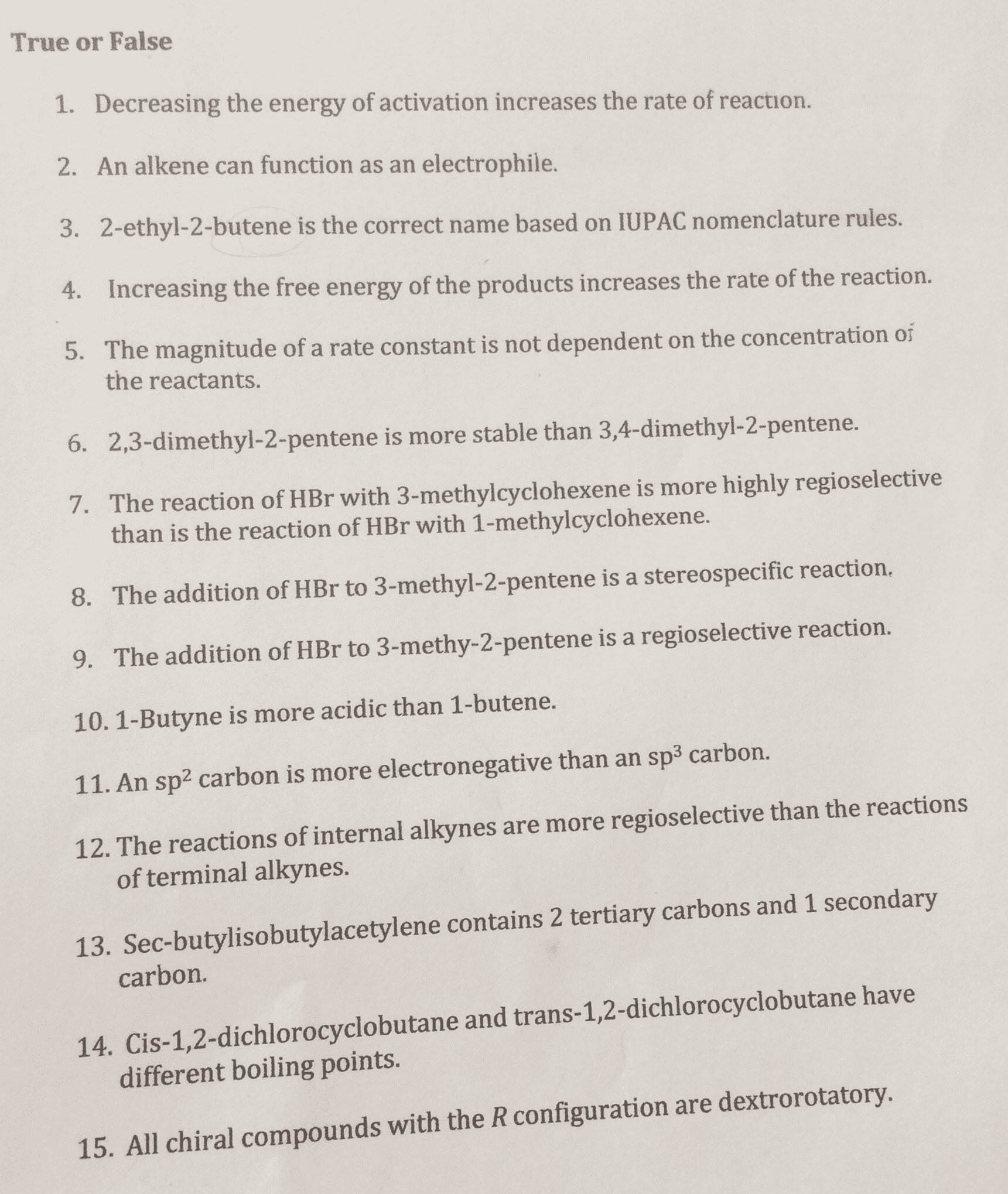CHEM266 Lecture Notes - Lecture 10: Reagent, Sulfur, Ion
Document Summary
Rxn rate is 1st order and rate of rxn = k[substrate], where k = rate constant: biomolecular (e2) = rate of rxn is dependent on concentration of base and substrate. It produces one major product when many possible products are possible. 10. 2 bimolecular elimination: mechanism and transition state: 2 species involved in rds. E2 rxn that forms less substituted alkene (less thermodynamically favourable alkene) is said to be under hofmann conditions; an e2 rxn that forms more substituted alkene (more thermodynamically favourable alkene) is said to be under zaitsev conditions. 10. 4: e2 vs sn2 reactants for an e2 are same for sn2. Basicity vs nucleophilicity: basicity = ability of reagent to accept a proton; it"ll have a high affinity for a h 1s orbital. It"s based on rate that an sn2 rxn can occur, such that the faster the rate, the better the nucleophile; it is a kinetic phenomenon.



